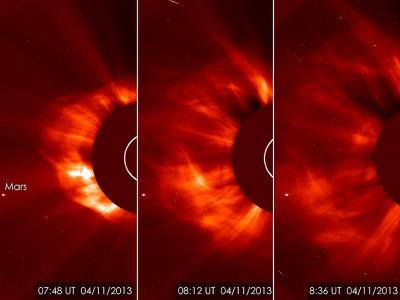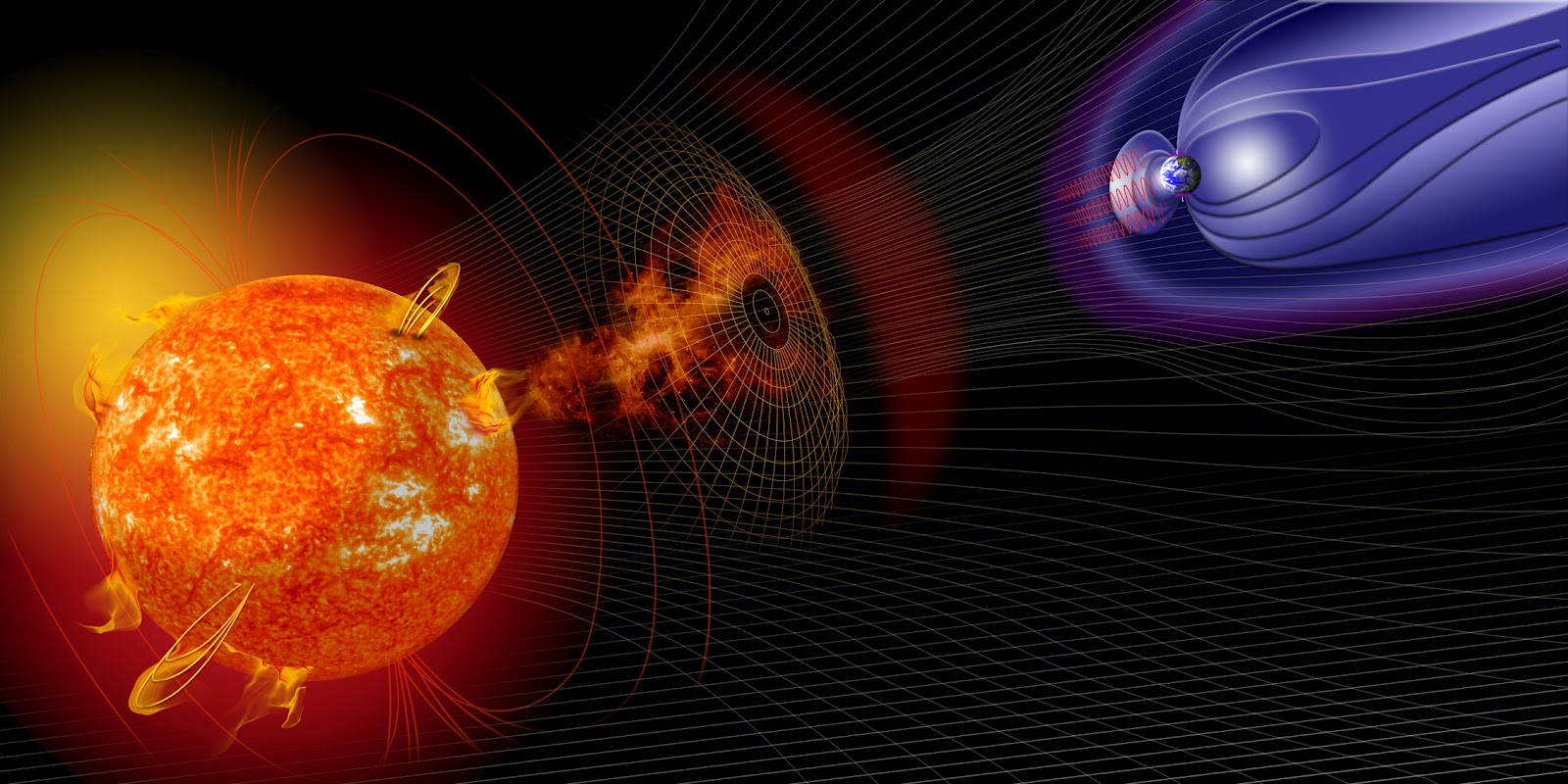
13 Apr Biggest Solar Flare of the Year Erupts from the Surface of the Sun
Hermanus, South Africa, 13/04/2013
From the Regional Space Weather Warning Centre at the Space Science Directorate of the South African National Space Agency.
The most powerful solar flare of the year erupted from the sun on 11 April 2013. Active region 1719 produced an M-class flare associated with an Earth directed coronal mass ejection (CME). The CME is expected to arrive at Earth on 13 April 2013 at ~22:00 UTC. This will lead to disturbed geomagnetic conditions and will continue to be monitored by the South African National Space Agency.

Solar Heliospheric Observatory captured this series of images of a coronal mass ejection on the morning of April 11, 2013. Mars can be seen on the left. Credit: ESA&NASA/SOHO/GSFC
A CME is a massive cloud of hydrogen ions ejected from the surface of the sun when stored energy is suddenly released. The CME produces a cloud of high energy particles traveling at supersonic speeds (500-2000 km per second). When a CME is ejected towards Earth it reaches us within a day or two and can cause a disturbance to the Earth’s magnetic field.

The Earth’s magnetic field protects us form adverse space weather like CME’s and the solar wind. Credit: NASA
The effects of a CME will not harm humans and other life forms on Earth as we are protected by the Earth’s magnetic field, but it can cause disturbances to our satellite communication systems like GPS, radio communications, cell phones and DStv. Only minor disturbances are expected at this stage.
An M-Class flare is a relatively mid-level flare on the scale of solar flares with X-Class flares at the top of the scale. Five categories A, B, C, M and X are used to rank solar flashes associated with solar flares based on their intensity. A-Class flashes are the weakest, while X-Class flashes are the most energetic. Last year a number of X-Class flares associated with Earth directed CME’s occurred causing mild geomagnetic storms.
The sun goes through 11-year cycles of solar activity. Solar minimum which refers to a period when the number of sunspots is lowest bringing less solar activity and solar maximum when sunspots are most numerous bringing more frequent solar activity and a greater likelihood of solar flares. The sun is currently in a solar maximum cycle which is expected to peak later this year.
For more information contact SANSA Space Science at spacesci-info@sansa.org.za or call us on +27 28 312 1196



